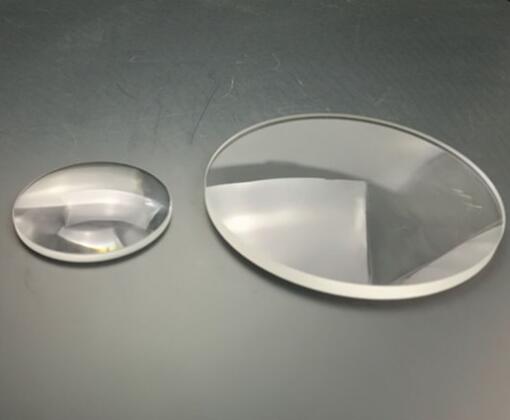The uses of convex lens and concave lens
Oct. 26, 2021
A lens is a transparent material (glass or plastic) that has at least one curved surface. The shape of the lens causes light to bend in a specific way as it passes through the lens itself, either converging to a specific point or diverging from a specific point.
Convex (converging) lens -- converges parallel light rays to a single point on the optical axis, on the opposite side of the lens.
Concave (diverging) lens -- diverges parallel rays. All light entering the lens diverges parallel to its optical axis.

Uses of convex lens
For magnifying glasses
One of the most straightforward and simple uses of a convex lens is a magnifying glass. When light enters the convex lens of a magnifying glass, it is focused on a specific focal point in front of the center of the lens. Once the magnifying lens is at the optimal distance. The focal point will reach the object and therefore will produce the maximum magnification of the object.
Convex lenses for eyeglasses
A person may become farsighted or nearsighted because the lens of the eye is unable to focus light properly on the retina. The lens of a person with hyperopia focuses the image behind the retina. As a result, it causes a person to have difficulty focusing on objects close to the eye. A convex lens, when placed in front of the eye, bends the light, thereby shortening the focus and allowing the light to be focused on the retina in the proper way.
Used in cameras
Convex lenses are widely used in cameras, not only to focus images but also to magnify them. Almost all camera lenses consist of a convex lens, a concave lens, and a convex lens. The first lens controls the magnification of the image by moving away from or toward the object.
For microscopes
Microscopes use convex lenses to produce magnified images of very small objects. Most simple microscopes consist of three lenses. The lens at the end of a simple microscope produces an inverted and magnified image.
Uses of concave lens
Concave lenses for eyeglasses
Concave lenses are most often used to correct nearsightedness. In myopic patients, the eye is too long for images of distant objects to fall on the retina. Therefore, concave lenses are used in eyeglasses to correct this deficiency by spreading the light before it reaches the eye. This allows a person to see distant objects more clearly.
Used in lasers
Different types of scanners, medical devices, CD and DVD players all use laser beams. Since laser beams are highly concentrated, they are spread out for the equipment to work properly. Small concave lenses are used to expand the laser beam to sharpen it into a specific area.
Used in cameras
To improve the quality of photographs, combinations of convex and concave lenses are widely used by camera manufacturers. When only a convex lens is used as the main lens of a camera, it causes distortion in the photo, which is called chromatic aberration. By combining concave and convex lenses, these undesirable effects can be eliminated.
Used in flashlights
Concave lenses are also used in flashlights to amplify the light produced by a light source. The light falls on the hollow side of the lens, while the light diverges on the other side. This increases the radius of the light source, thus providing a wider beam.
For peepholes
A peephole or door viewer is a security device that allows a panoramic view if there is an object outside the wall or door. A concave lens is used to minimize the scale of the object, giving a wider view of the object or area.
Previous: Coating Material of Infrared Reflectors
Next: Fused Silica Lenses




















